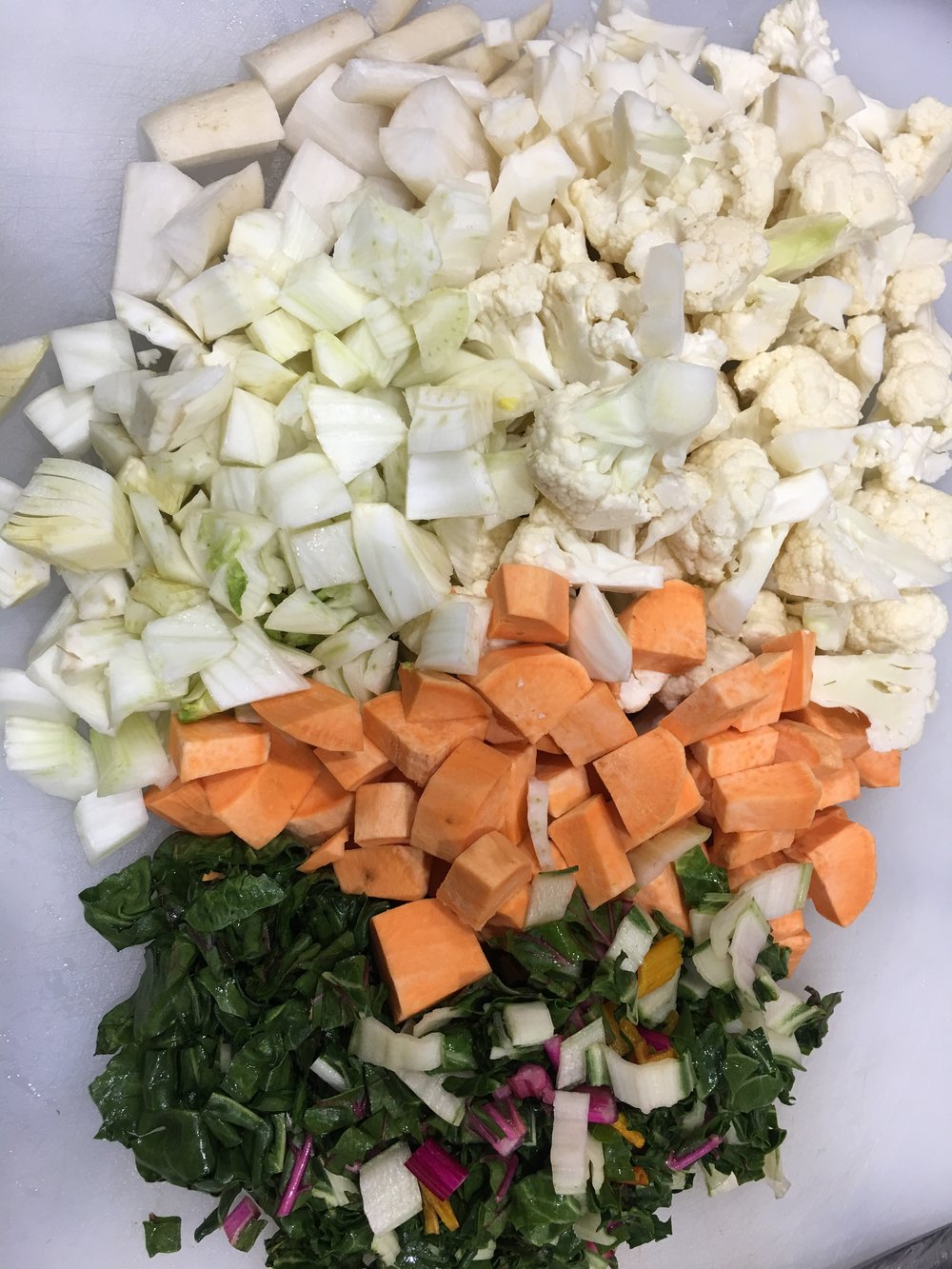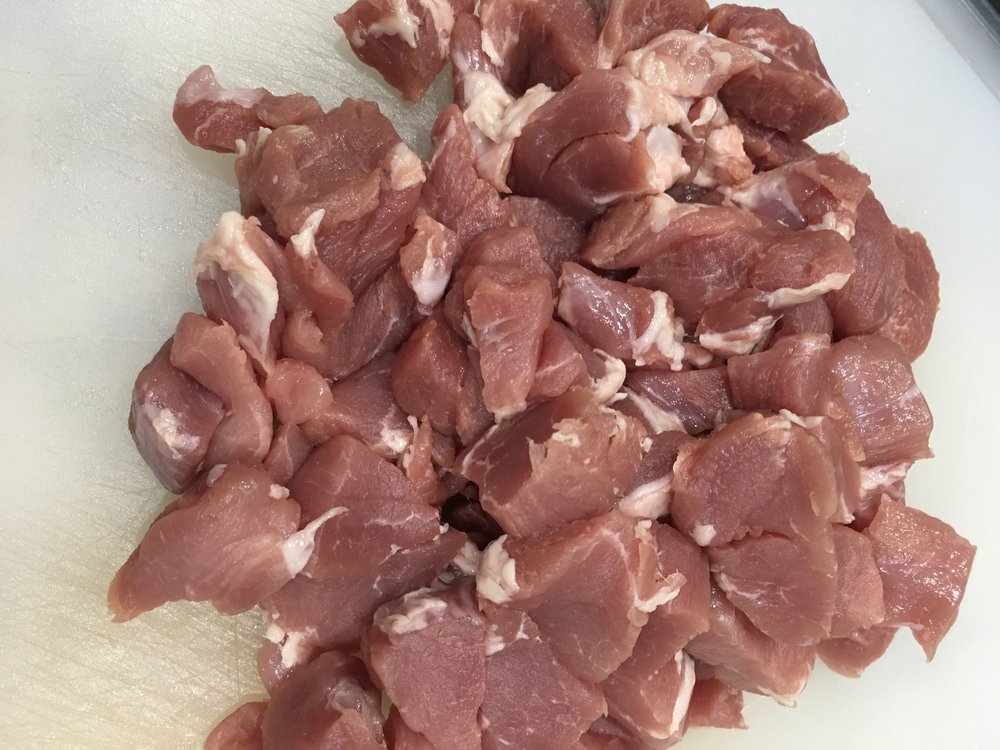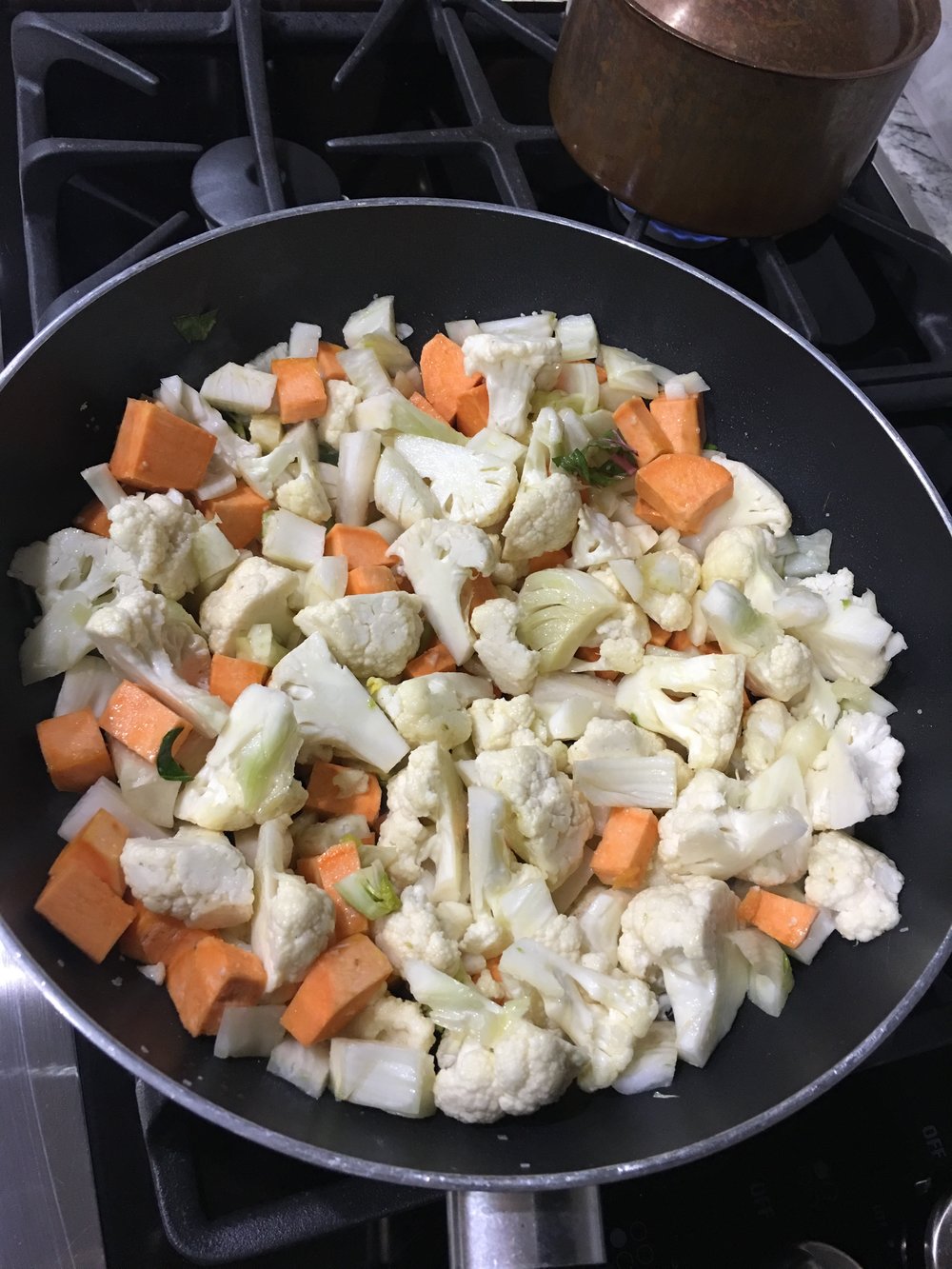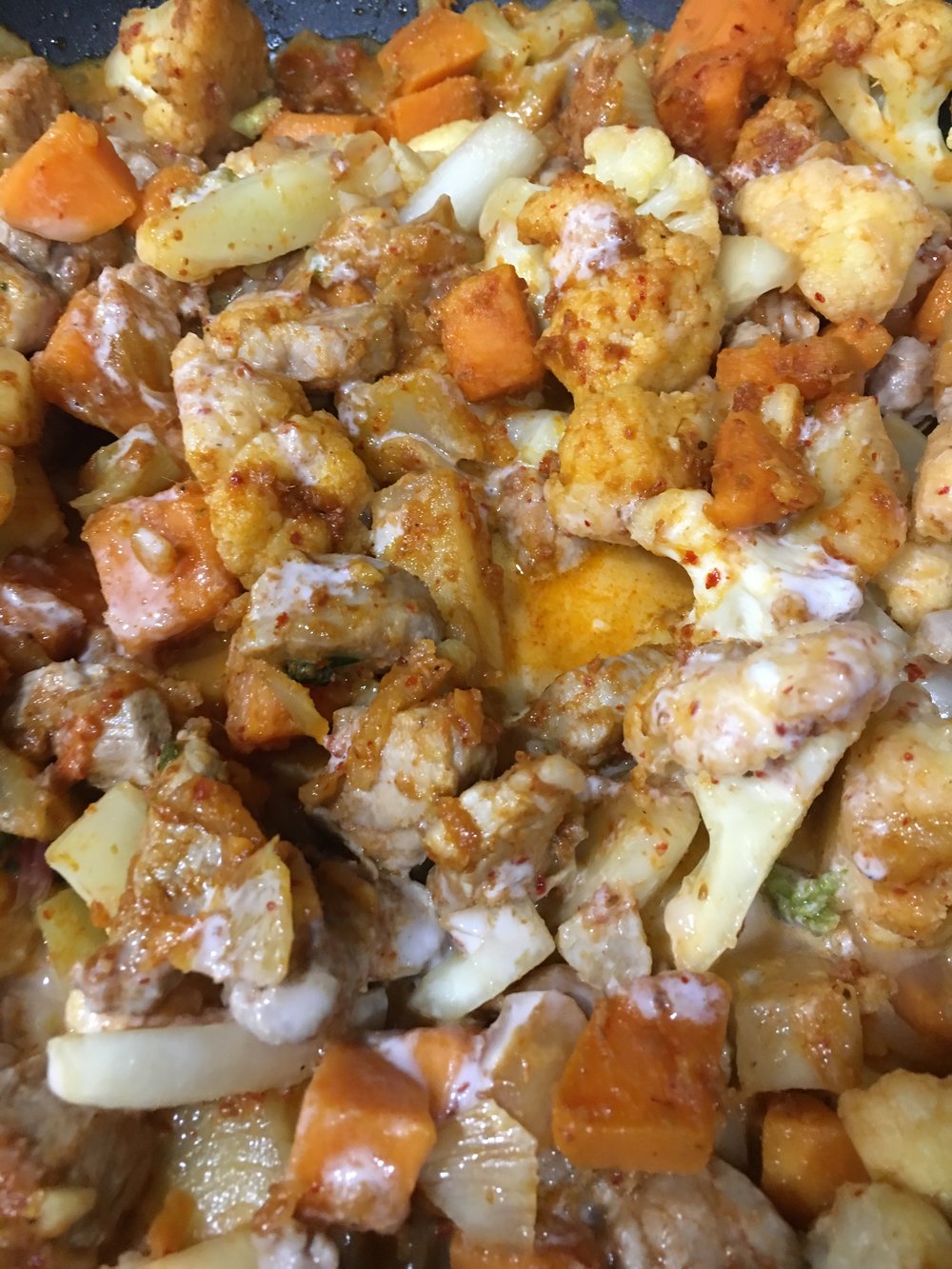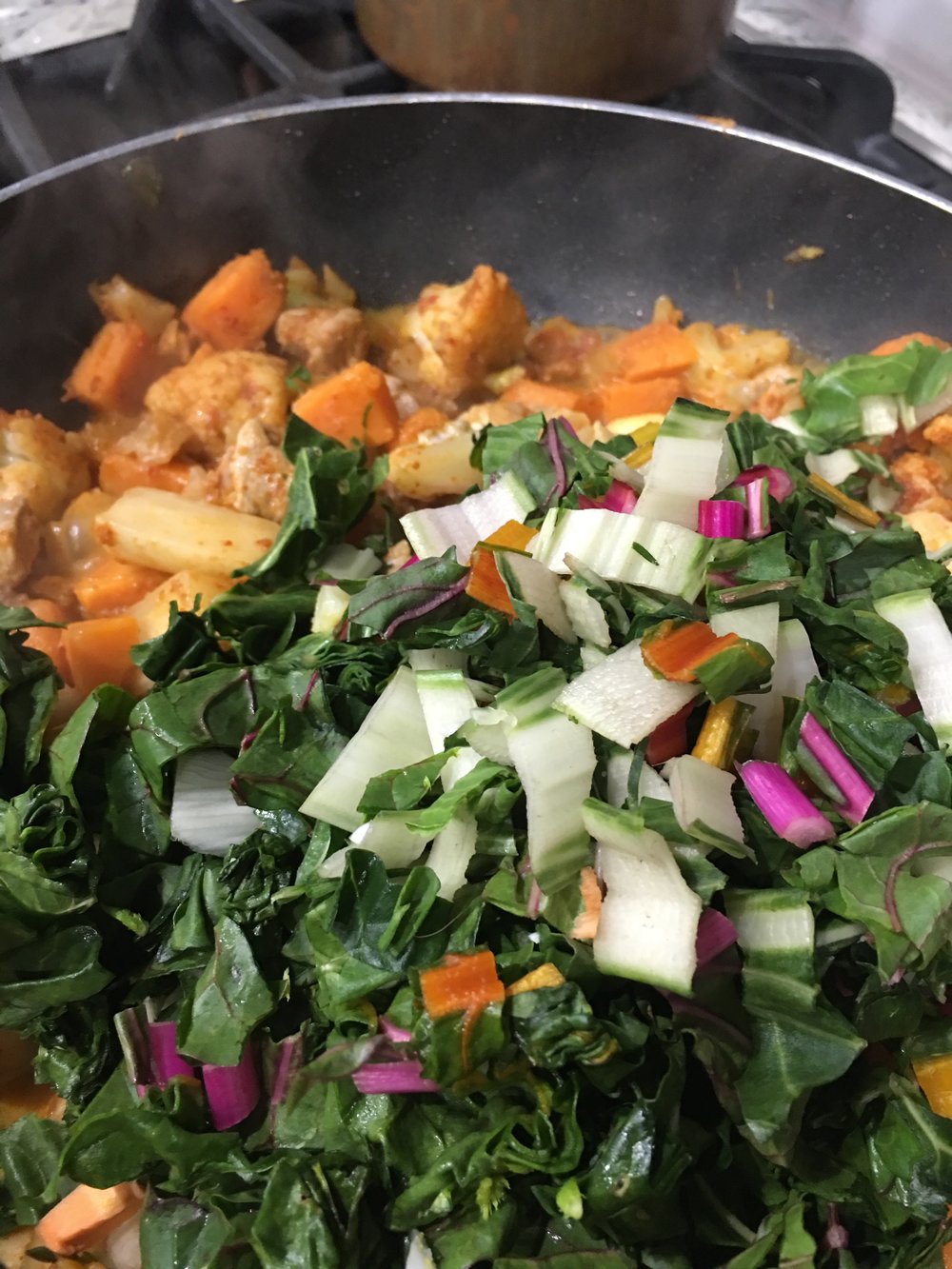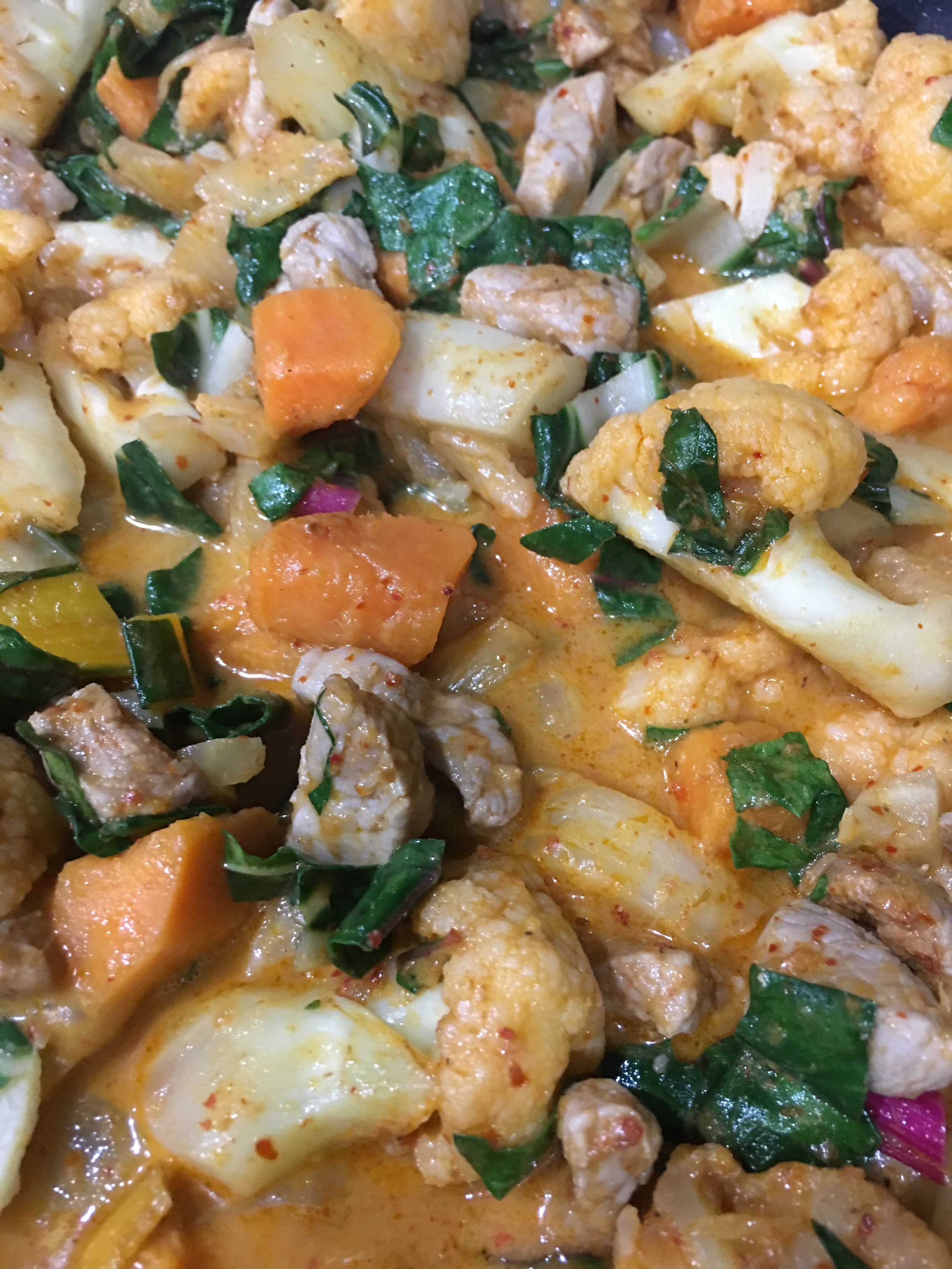Instead of meatless, I think of all meals as Mostly Vegetables with a small amount of protein. I eat meat, but it's not usually the focus of my food desires. I find this approach helps me get closer to the daily goal of 4-5 servings of fruits and vegetables daily. Using seasonal produce keeps it fresh and nutritious and gives me a sense of time and place as the year progresses.
Monday nights are always hectic when it comes to getting the evening meal ready. What's in the fridge? What can I cook without too much time. Good news! The fridge is filled with winter vegetables and a pork tenderloin from the farmers market. I always have some curry paste and coconut milk on hand. A stash of basmati lives in the freezer.
I think being unconstrained by specific recipes, and using a method, choosing the ingredients on hand, is a much better way for me. But that does require knowing a few methods. This is an easy one and I go back to it often. It's a one pot approach, which I seem to have embraced in the past few years as I have been cooking much more regularly.
Although one doesn't find this combination in a traditional Panag curry, it's perfect for the time. Fennel is bountiful where I am, so I used it, along with a gorgeous cauliflower, a slightly dried daikon, two sweet potatoes, and a bunch of rainbow chard. I like the cauliflower with some crunch, so I cut the pieces a little larger than the rest of the veggies. I cut the pork tenderloin into small cubes. I used a canned curry paste, just because it's easy. I like Maseri brand. The amounts of vegetables should be about 3 to 4 times the volume of the protein. You can substitute, chick peas, tofu or paneer to keep it meatless. Add chicken, another meat, shrimp, or a meaty fish.
This is a particularly delicious combination, but I encourage you to mix and match vegetables that you like. You can use this method with any of the Thai curry pastes.
I have not added salt as the curry paste is high in sodium. You can also make your own curry paste, lower the sodium and keep it in the freezer.
This makes a large pot of curry and serves 6-8. It's great for a left over lunch as well. I freeze it as well, making sure to thaw slowly in the fridge to keep a better texture of the ingredients .
Recipe: Vegetable and Pork Curry
INGREDIENTS:
- 2 tablespoons extra virgin or expeller-pressed canola oil
- 1 medium cauliflower, cut into florets (about 3 cups)
- 2 small sweet potatoes (about 2 cups)
- 1 medium fennel bulb, chopped (about 2 cups)
- 1 daikon (about 1 cup)
- 1 bunch rainbow chard, leaves and stems, chopped (about 2 cups)
- 1 pork tenderloin (about 1-1/2 pound)
- 1-4 oz can Maesri Penang Curry Paste
- 8oz coconut milk
- 8oz water
- 1/4 C cilantro leaves for garnish
- Lime wedges for serving
PROCESS
- Heat oil in a large nonstick pan with high sides.
- Add all vegetables and sautée over medium high heat until sweet potatoes are just cooked through. (If using chick peas, add them with the vegetables).
- Add pork and curry paste and sautee for 3-4 minutes.
- Add water and coconut milk, mix well.
- Cover and simmer for 6-8 minutes.
- Serve with a little basmati rice or enjoy on its own.
- Garnish with cilantro and a lime wedge if you like.
